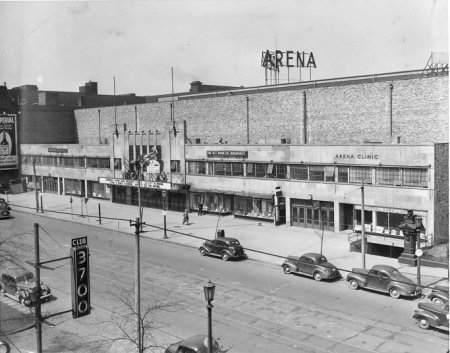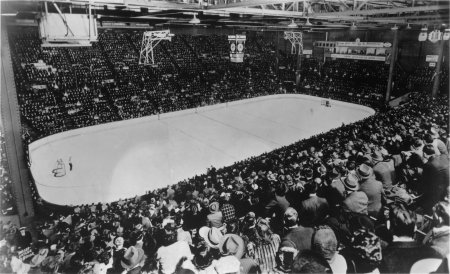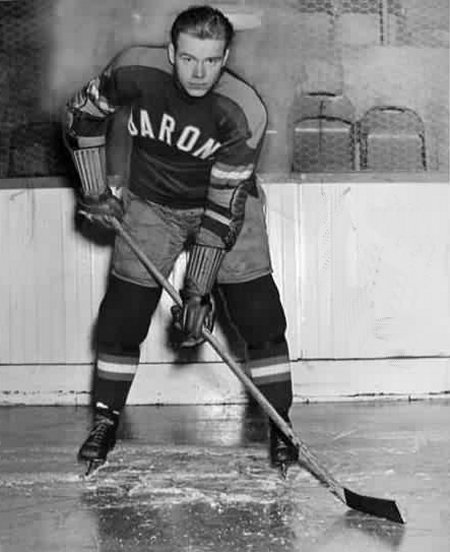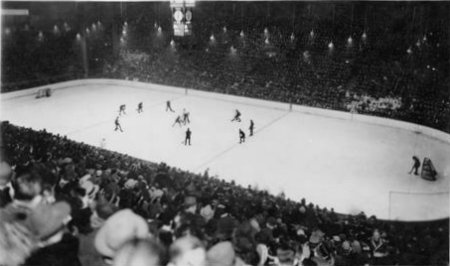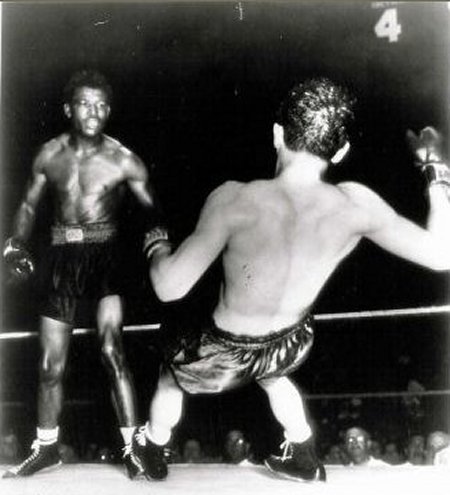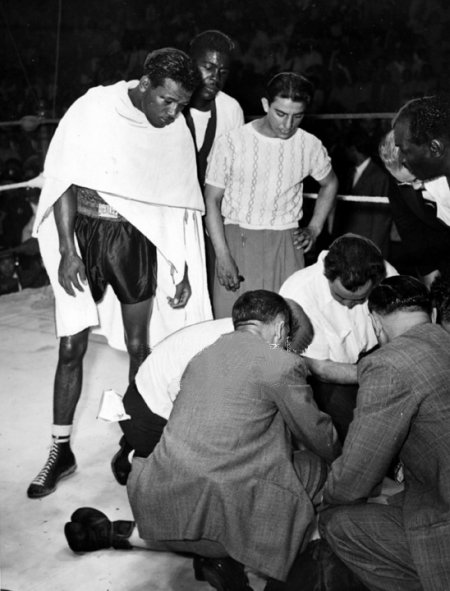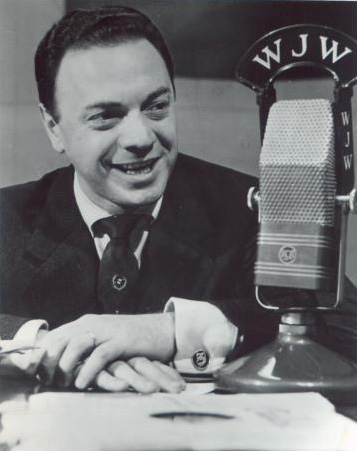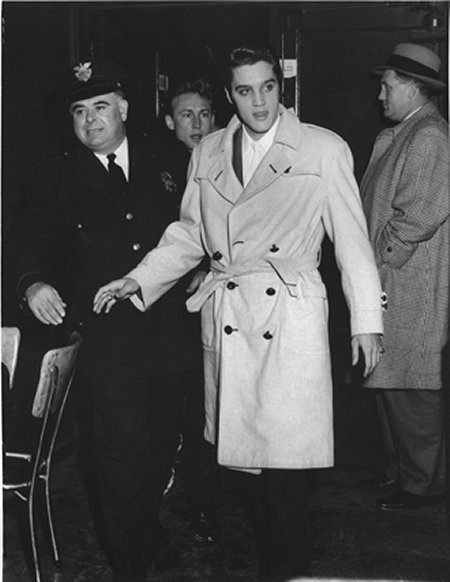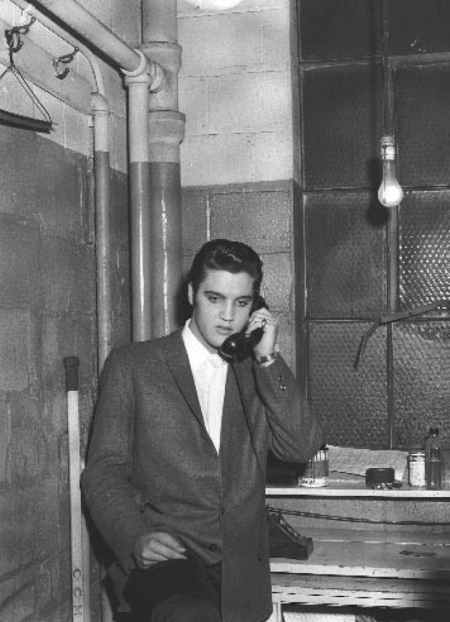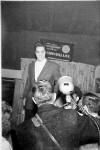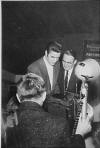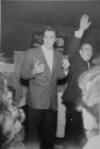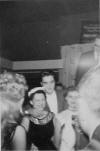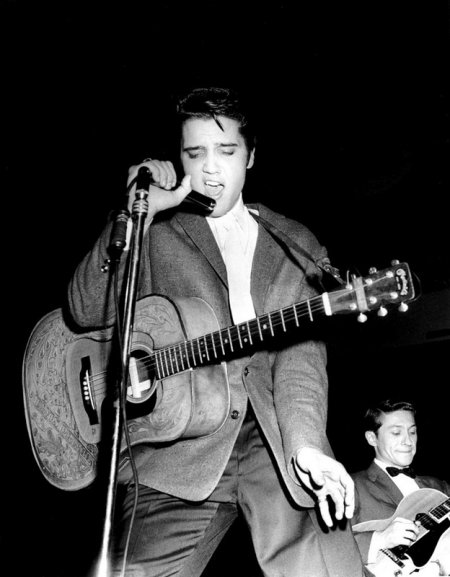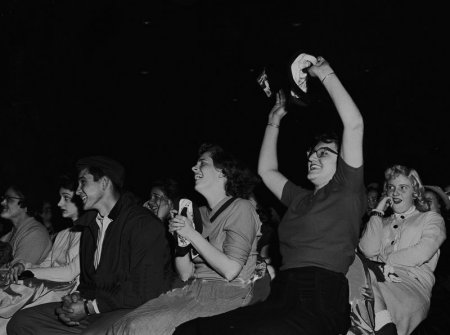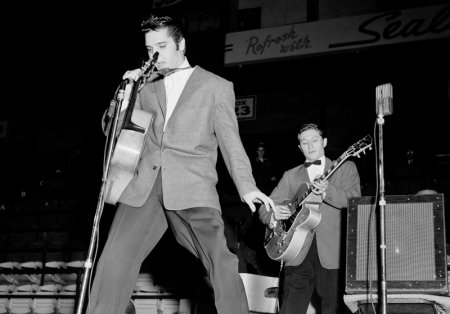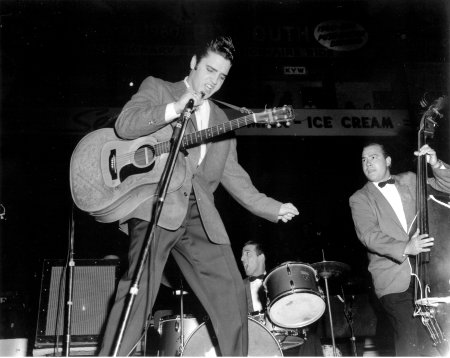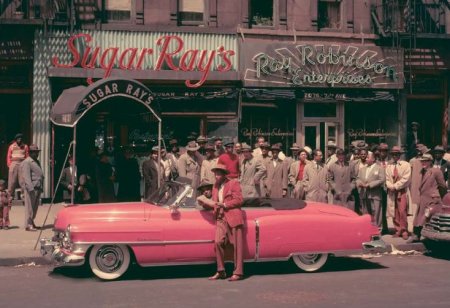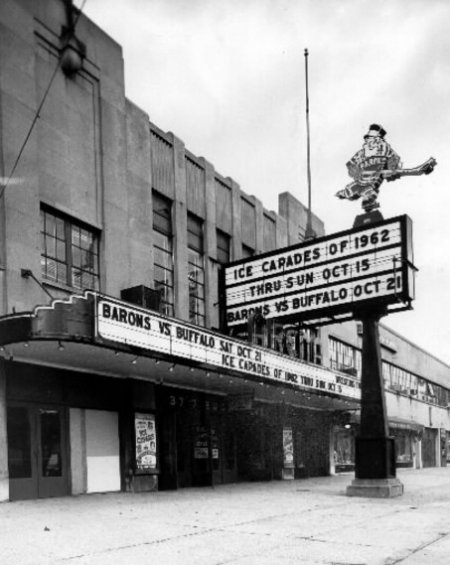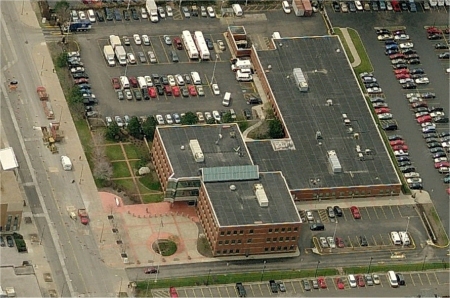 |
The Cleveland Arena
Arena entertainment began in Cleveland, Ohio when the 2,000 seat Elysium, located at Euclid Avenue and East 107th Street was built in 1907. In 1934 local sports promoter Albert C. Sutphin bought the faltering Cleveland Indians hockey team, changed their name to the Cleveland Falcons, and entered the newly formed American Hockey League. The team played at the Elysium. Hockey was a fast growing passion in Cleveland and by the mid-1930s, the Elysium was too small to accommodate the increasing number of fans.1
Seating 9,847 for hockey, the first hockey game in arena was played on November 17, 1937 between the now named Cleveland Barons of the American Hockey League and the New York Rangers of the NHL. Although the Barons hockey team was its primary tenant, Sutphin tirelessly promoted the Arena as the site for a variety of indoor events, and its mortgage was paid off in 12 years. By the 1940s, the Arena was hosting as many as 330 events a year, including rodeos, circuses, and a host of sporting events, from Hockey to 6-day bicycle races. High school, college and professional basketball games, and boxing and wrestling matches also drew large crowds.1
The Arena was the scene of the tragic World Welterweight championship bout between Sugar Ray Robinson and Jimmy Doyle on June 24, 1947. Sugar Ray was the reigning champ and won on a TKO in the 8th round. "In the hours before the fight Ray had told anyone who would listen that he 'had a dream last night that I killed Doyle.' Only a fool would have believe him. Nevertheless Ray was convinced that fate had decided he was going to kill Doyle in the ring. He wanted the fight to be called off."2
Robinson had the advantage in every round except the sixth (when Sugar Ray was staggered twice and hurt). A single left hook ended the fight, Doyle not having been in any noticeable difficulty until then. "That punch knocked Jimmy rigid. With heels resting against the canvas as if hinged, Doyle's body went down. It struck the floor with a thud, like a rigid mass falling. His head crashed against the padded canvas, and as the referee started the count. Doyle raised his head and rested on his elbows... The count of nine was reached and the bell sounded to end the round. Doyle was taken in an ambulance to St. Vincent's Charity Hospital immediately after the injury, failed to regain consciousness and passed away a few hours after."3 Sutphin owned and operated the Arena until April 1949, when he sold it and the Barons to a group of Minneapolis businessmen.1
Alan Freed, the disc jockey credited with coining the term "rock and roll", came to prominence at WAKR in Akron and WJW in Cleveland.4 Freed was one of the first "non-R&B" DJs to play music by performers such as Fats Domino and Little Richard to a white audience. Rather than refer to the music as R&B he got the term "Rock n Roll" from the lyrics of a "Sixty Minute Man" recorded by the Dominoes in 1951. He called his listeners Moondogs and he would howl into the microphone. On March 21, 1952 the Moondog Coronation Ball was held at the Arena and the event was emceed by Freed.5 Tickets to the concert, believed to be the first rock and roll concert, sold frantically--and the promoters kept printing them. It was estimated that 20,000 tickets were sold to the 10,000-seat venue. More than 20,000 fans crashed the gates and so hectic was the scene that the local authorities shut down the event after just the first song.5
On March 22, the day after the concert, Freed talked unapologetically about the event, and pledged to continue pleasing his fans (Alan Freed Aircheck - March 22, 1952, WJW Realplayer, Windows Media, MP3 Download ). In September of 1954 Freed moved to WINS in New York City, where he hosted a number of legendary stage shows, and starred in several major motion pictures.4 A new era in journalism was heralded after World War II by the arrival of Television, which came to Cleveland in 1947. Newspapers were squeezed between this new rival and the increased power of labor unions, which had brought Cleveland its first newspaper strike in 1946.1 Cleveland's second newspaper strike came in November of 1956. At the time there were two afternoon newspapers, The Cleveland Press and The Cleveland News, and one morning newspaper, The Cleveland Plain Dealer. The three dailies' contracts with the Cleveland Newspaper Guild expired the night of Oct. 31 without a new settlement. In the old contracts at all three papers a newsman with five years experience had a minimum weekly rate of $122.50. The guild was seeking increases of $9 to $12.50 weekly spread over two years.6 Immediately television and radio stations doubled and redoubled their newscasts. Radio stations, in particular, stepped up the frequency and length of their newscasts. Businesses that could not advertise in the newspapers sought more radio and television advertising.6
Elvis' first movie, Love Me Tender, had been released on November 16, 1956. It set a record for Twentieth Century Fox as the largest release of a film ever at 550 prints. Love Me Tender, the song had gone to No. 1, with Don't Be Cruel/Hound Dog in the No. 2 slot. Love Me Tender also had another distinction: It was the first song Elvis recorded that didn't include Scotty, Bill or DJ. On November 23rd, three days before the end of the strike, they along with the Jordanaires performed three shows at the Cleveland Arena. There was literally no coverage by the press.
The strike proved fortuitous for a 17-year-old boy from Cleveland in attendance at the concert. Lew Allen, the photographer for his Heights high school newspaper, "The Black and Gold," and yearbook, was the only "professional" photographer at the show. He gained free reign access to the backstage area and the shows and captured a collection of stunning photos.
Lew shot a total of 27 photos, of which his school newspaper only published one. For years the remainder went unpublished and unseen. The newspaper strike ended three days later on the 26th. Alan Freed's career was eventually derailed by the payola scandal of the late '50s, and died on January 20, 1965 at the age of 43, a penniless, broken man. Sugar Ray Robinson held the world welterweight title from 1946 to 1951, then was the middleweight champion five times between 1951 and 1960. At his peak, his record was 128-1-2 with 84 knockouts. The phrase "Pound for pound, the best" was coined for him.7
Coincidentally, years before Elvis even sang about one, Robinson drove a flashy pink Cadillac, a convertible, and was the pioneer of boxing's bigger-than-life entourages, which included a secretary, barber, masseur, voice coach, a coterie of trainers, beautiful women, a dwarf mascot and lifelong manager George Gainford. He also owned a Harlem nightclub.6 On one occasion he gave half a bout's purse, about $12,500 to the mother of Jimmy Doyle. His giving to Jimmy Doyle's family eventually totaled around $20,000.2 By 1965, he was broke and forced to fight five times in 36 days for as little as $1,100 a night. Soon after losing a 10-round decision to Joey Archer, the 44-year-old Robinson announced his retirement -- this time for good. He finished with a record of 175-19-6 with two no-decisions. He was considered by many, including Muhammad Ali, Joe Lewis and Sugar Ray Leonard to be the greatest boxer ever.7
Nick Mileti bought both the Arena and the Barons in 1968. During its lifetime, the Cleveland Arena also was home to the Crusaders of the World Hockey Association, the Rebels of the Basketball Association of America, the Pipers of the American Basketball League and finally, the Cleveland Cavaliers of the National Basketball Association.8 Seating only 11,000 for basketball, much like its predecessor the Elysium, the Arena became somewhat outdated with time as more and more people were beginning to attend events and there was a need for a larger facility. In 1974, indoor events moved from downtown Cleveland to the new 20,000-seat Coliseum 25 miles south of the city in Richfield, Ohio. Together with the Crusaders, the Cavaliers moved to the Coliseum for the 1974-75 season. The Cleveland Arena was demolished in early 1977.8
In 1986 Freed was among the first inductees to the Rock and Roll Hall of Fame in Cleveland along with Elvis Presley, Buddy Holly, Chuck Berry, Fats Domino, James Brown, Jerry Lee Lewis, Little Richard, Ray Charles, Sam Cooke, The Everly Brothers, Jimmie Rodgers, Jimmy Yancey, Robert Johnson, John Hammond and Sam Phillips. Today the site of the Cleveland Arena is home to the Greater Cleveland Chapter of the American Red Cross. Allen later took photos other major Rock n' Roll stars from the 1950s - including The Everly Brothers, Bobby Darin, Buddy Holly, Dion and many more. He went on to attend the Rochester Institute of Technology where he trained under famed photographer Minor White. He is currently a professional photographer residing in Rochester, New York. Several years ago the photos were published in a book called "Elvis & the Birth of Rock." page added May 16, 2008
1 courtesy Encyclopedia
of Cleveland History Cleveland Hockey Club bond courtesy of Scripophily.com
|
|
All photos on this site (that we didn't borrow) unless otherwise indicated are the property of either Scotty Moore or James V. Roy and unauthorized use or reproduction is prohibited. |
